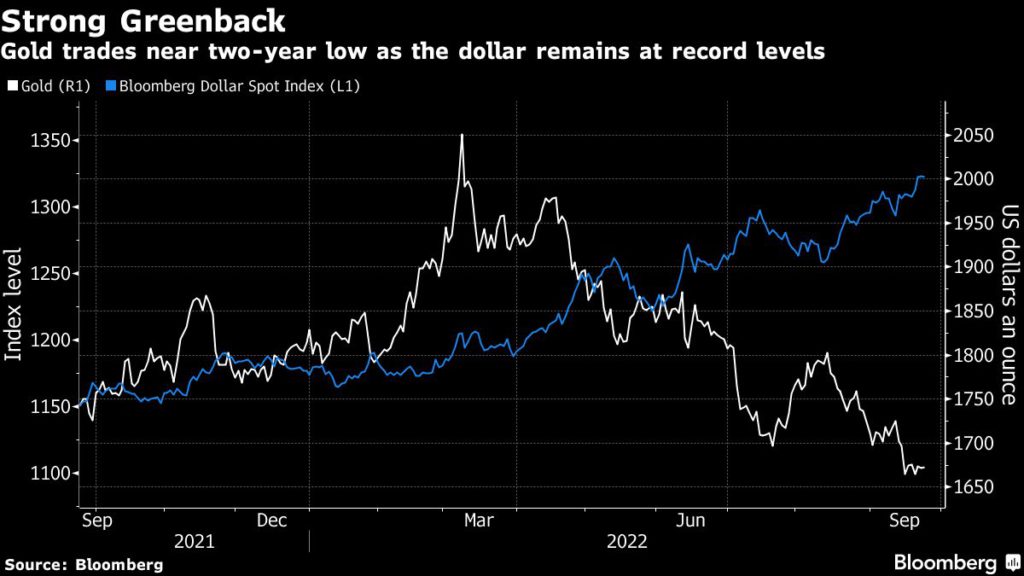Mining
Friday, September 23rd, 2022 8:47 am EDT

[Click here for an interactive chart of gold prices]
Gold’s decline comes on the back of a rallying US dollar, which touched a 20-year high, curbing demand for the greenback-priced metal. Benchmark 10-year yields also jumped to their highest since April 2010, further dampening demand for bullion.
“We’re seeing relentless dollar strength here and that’s going to keep gold vulnerable in the short term,” Edward Moya, senior analyst with OANDA, told Reuters.
“The economy is clearly heading towards a recession. The risks of a hard landing are elevated, and this has been just continuing to drive flows into the dollar, which has been bad news for gold.”
“This should see (gold) prices trading broadly sideways over the rest of the year,” Fitch Solutions added in a note to Reuters.
The precious metal joined the selloff in risky assets as investors opted for cash after UK’s economic plan reignited concerns that central banks’ aggressive interest-rate hikes to rein in rampant price increases may lead to a recession.
Outflows from gold-backed exchange-traded funds have continued, with holdings now close to the lowest this year, Bloomberg data shows. US business activity contracted in September for a third-straight month, though at a more moderate pace as a pickup in orders and a further softening of inflation allayed concerns of a more-pronounced pullback.
Weakness in bullion is “very likely to persist” due to “monetary tightening that makes gold costlier to hold,” said Gnanasekar Thiagarajan, director at Commtrendz Risk Management Services. “However, recession fears and any escalation in the Russia and Ukraine conflict could support prices.”
(With files from Bloomberg and Reuters)
This post has been syndicated from a third-party source. View the original article here.




